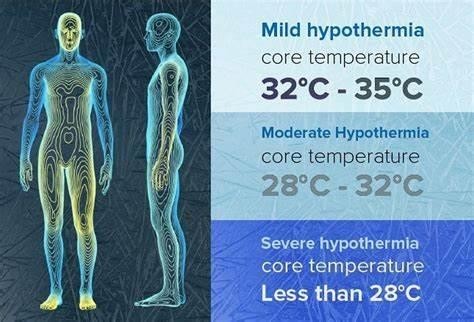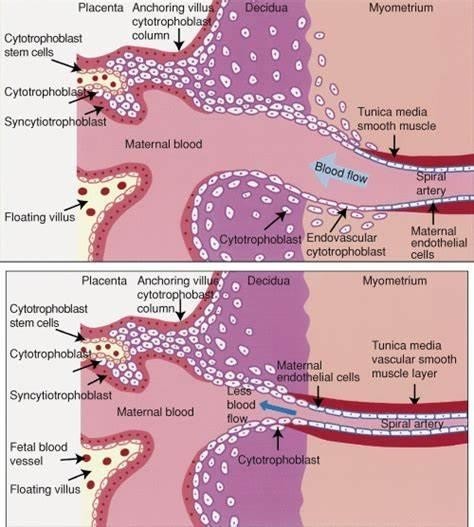The prenatal clinic nurse monitored women for preeclampsia. All four women were in the clinic at the same time. Which one should the nurse see first?
Weight gain of 0.5 kg during the past 2 weeks
Pitting pedal edema at the end of the day
Blood pressure increase to 138/86 mm Hg
Dipstick value of 3+ for protein in her urine
The Correct Answer is D
Choice A) Weight gain of 0.5 kg during the past 2 weeks: This is a normal weight gain for a pregnant woman and does not indicate preeclampsia.
Choice B) Pitting pedal edema at the end of the day: This is a common symptom of pregnancy and does not necessarily indicate preeclampsia. It can be relieved by elevating the legs and wearing compression stockings.
Choice C) Blood pressure increase to 138/86 mm Hg: This is a mild elevation of blood pressure and does not meet the criteria for preeclampsia, which is defined as a systolic blood pressure of 140 mm Hg or higher or a diastolic blood pressure of 90 mm Hg or higher on two occasions at least four hours apart.
Choice D) Dipstick value of 3+ for protein in her urine: This is a sign of significant proteinuria, which is one of the main features of preeclampsia. Proteinuria is defined as a urinary protein excretion of 300 mg or more in 24 hours or a dipstick reading of 1+ or higher. A dipstick value of 3+ indicates severe proteinuria and requires immediate attention and treatment. This woman has the highest risk of developing complications from preeclampsia, such as eclampsia, HELLP syndrome, placental abruption, or fetal growth restriction . Therefore, she should be seen by the nurse first.

Nursing Test Bank
Naxlex Comprehensive Predictor Exams
Related Questions
Correct Answer is D
Explanation
Choice A) Decreased metabolic rate is incorrect because this is not a result of hypothermia in the newborn, but rather a cause of it. Metabolic rate is the speed at which the body uses energy to perform its functions. Newborns have a high metabolic rate, which helps them to maintain a normal body temperature of 36.5°C to 37.5°C (97.7°F to 99.5°F). However, some factors can lower the metabolic rate of newborns, such as prematurity, low birth weight, infection, or hypoglycemia. A low metabolic rate can make the newborn more susceptible to heat loss and hypothermia, which is a condition that occurs when the body temperature drops below 36°C (96.8°F). Therefore, this response is inaccurate and misleading.
Choice B) Decreased oxygen demands is incorrect because this is not a result of hypothermia in the newborn, but rather a consequence of it. Oxygen demand is the amount of oxygen that the body needs to function properly.
Newborns have a high oxygen demand, which helps them to support their growth and development. However, some factors can decrease the oxygen demand of newborns, such as hypothermia, sedation, or asphyxia. A low oxygen demand can impair the oxygen delivery and utilization by the tissues and organs, leading to hypoxia, acidosis, or organ failure. Therefore, this response is irrelevant and inaccurate.
Choice C) Shivering to generate heat is incorrect because this is not a result of hypothermia in the newborn, but rather a mechanism that is absent in them. Shivering is an involuntary contraction of the muscles that produces heat and raises the body temperature. It is a common response to cold exposure in adults and older children, but not in newborns. Newborns do not have the ability to shiver, as their muscles are immature and lack glycogen stores.
Instead, they rely on other methods to generate heat, such as non-shivering thermogenesis, which involves burning brown fat in certain areas of the body. Therefore, this response is irrelevant and inaccurate.
Choice D) Increased glucose demands is correct because this is a result of hypothermia in the newborn that can cause complications. Glucose demand is the amount of glucose that the body needs to produce energy and maintain its functions. Newborns have a high glucose demand, which helps them to support their metabolic rate and thermoregulation. However, some factors can increase the glucose demand of newborns, such as hypothermia, stress, or infection. A high glucose demand can deplete the glucose stores and cause hypoglycemia, which is a low level of glucose in the blood that can lead to seizures, brain damage, or death. Therefore, this response is clear and accurate.

Correct Answer is B
Explanation
Choice A) Prepare for an emergency cesarean birth is incorrect because this is not a priority or appropriate action for a nurse who is caring for a client who has preeclampsia and is being treated with magnesium sulfate IV.
Preeclampsia is a condition that causes high blood pressure, proteinuria, and edema during pregnancy. It can lead to complications such as eclampsia, which is seizures, or HELLP syndrome, which is hemolysis, elevated liver enzymes, and low platelets. Magnesium sulfate is a medication that helps to prevent or treat seizures in preeclamptic clients by relaxing the muscles and nerves. However, it can also cause side effects such as respiratory depression, hypotension, or loss of reflexes. Preparing for an emergency cesarean birth may be necessary if the client has severe preeclampsia or fetal distress, but it does not address the immediate problem of magnesium toxicity. Therefore, this action should be done only when indicated by the physician and after stabilizing the client's condition.
Choice B) Discontinue the medication infusion is correct because this is a priority and appropriate action for a nurse who is caring for a client who has preeclampsia and is being treated with magnesium sulfate IV. Discontinuing the medication infusion can help to stop or reduce the adverse effects of magnesium sulfate, such as respiratory depression, hypotension, or loss of reflexes. These effects can indicate magnesium toxicity, which is a life-threatening condition that can cause cardiac arrest or coma. The nurse should also notify the physician and prepare to administer calcium gluconate, which is an antidote for magnesium toxicity. Therefore, this action should be done as soon as possible for clients who show signs of magnesium overdose.
Choice C) Place the client in Trendelenburg's position is incorrect because this is not a safe or suitable action for a nurse who is caring for a client who has preeclampsia and is being treated with magnesium sulfate IV.
Trendelenburg's position means lying on the back with the head lower than the feet. It is sometimes used to improve blood flow to the brain or heart in cases of shock or hypotension. However, it can also cause complications such as increased intracranial pressure, decreased lung expansion, aspiration, or acid reflux. Moreover, it does not help to reverse or prevent the side effects of magnesium sulfate, such as respiratory depression, hypotension, or loss of reflexes. Therefore, this action should be avoided or used with caution for clients who are receiving magnesium sulfate IV.
Choice D) Assess maternal blood glucose is incorrect because this is not a relevant or necessary action for a nurse who is caring for a client who has preeclampsia and is being treated with magnesium sulfate IV. Blood glucose is the level of sugar in the blood that provides energy to the cells. It is measured by a blood test or a finger stick test. It can be affected by various factors such as diet, exercise, medication, or pregnancy. Assessing maternal blood glucose may be important for clients who have diabetes or gestational diabetes, which are conditions that cause high blood sugar levels that can harm the mother and the baby. However, it does not relate to preeclampsia or magnesium sulfate, which are conditions that affect blood pressure and nerve function. Therefore, this action should be done only when indicated by the physician and according to the client's history and needs.

Whether you are a student looking to ace your exams or a practicing nurse seeking to enhance your expertise , our nursing education contents will empower you with the confidence and competence to make a difference in the lives of patients and become a respected leader in the healthcare field.
Visit Naxlex, invest in your future and unlock endless possibilities with our unparalleled nursing education contents today
Report Wrong Answer on the Current Question
Do you disagree with the answer? If yes, what is your expected answer? Explain.
Kindly be descriptive with the issue you are facing.
